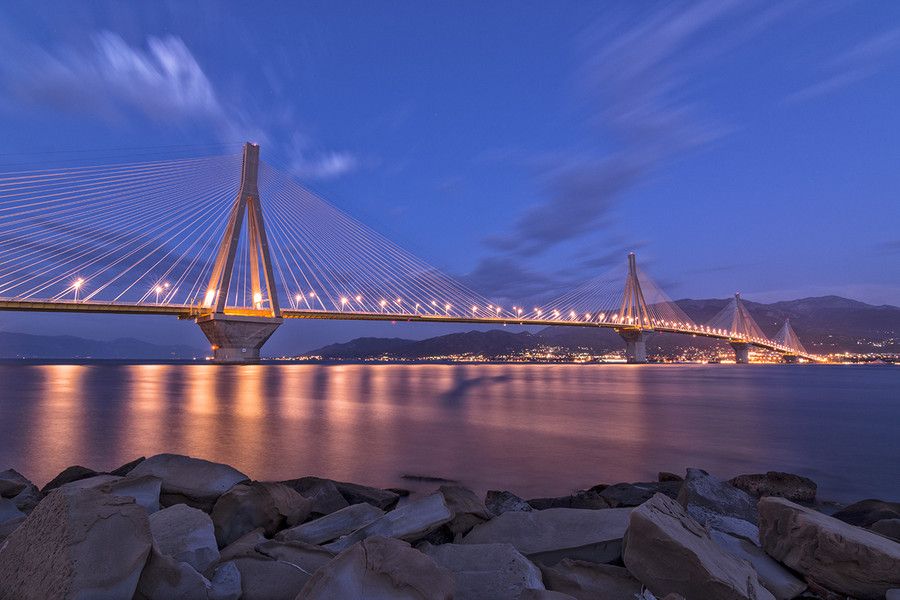The Rion-Antirion cable-stayed bridge is considered to be an engineering marvel, and it is for a reason.
A Bridge with History
It has been more than a hundred years since the then Prime Minister of Greece, Charilaos Trikoupis, envisioned bridging the approximately three kilometers that separate Rio from Antirrio.
In 1880, Charilaos Trikoupis was elected Prime Minister of Greece. Born in Nafplio, he envisioned the union of the region of Messolonghi from which he came (north coast of the Corinthian Gulf) with Achaia, in the Peloponnese (south coast).
On March 29, 1889, he spoke to Parliament about the need to bridge the Rio-Antirio Strait. However, the construction of this project was not technically possible until the end of the 20th century.
"Cable-stayed bridge: bridge form in which the weight of the deck is supported by several nearly straight diagonal cables in tension running directly to one or more vertical towers"

Thus, it took almost a century for the Greek State to announce a competition of ideas for the construction of a permanent link.
The invitation to tender in 1991 and the tender of December 1993 led to the signing, on January 3, 1996, of the Concession Agreement between the Greek State and GEFYRA SA. for the design, construction, financing, maintenance and operation of the Rio-Antirio Bridge.
The contract entered into force at the end of 1997 when full financing of the project was secured. It took two years to agree on the first financing of an infrastructure project with a concession to individuals in the history of modern Greece and the main loan agreement with the EIB was signed on 25 July 1997, while the final financing agreement was signed on 17 December 1997.
On July 19, 1998, Mr. Costas Simitis, Prime Minister of Greece, founded the Rio-Antirio Bridge project in the presence of Mr. Kostis Stefanopoulos, President of the Republic.
On August 12, 2004, on the eve of the start of the Athens Olympic Games, the Minister of PE.HO.DE. Mr. George Souflias inaugurated the Rio-Antirio Bridge, four months earlier than the contractual date of completion of works.
Innovative studies and offshore construction methods have been used to make this unique multi-opening cable-stayed bridge a reality.
It is worth noting, among other things, the adoption and application of the shallow foundation solution on a reinforced bottom, the continuous and fully suspended deck along the entire length of the bridge (2,252 m), the large seismic damping system, the cables equipped with special anti-seismic devices, the expansion joints that can receive large displacements along the axis of the bridge and transversely.
The study and construction was led by the French company Vinci in collaboration with the largest Greek construction companies (Aktor, J&P and Athena).



